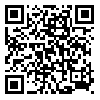Volume 8, Issue 4 (November 2021)
Avicenna J Neuro Psycho Physiology 2021, 8(4): 186-191 |
Back to browse issues page
Download citation:
BibTeX | RIS | EndNote | Medlars | ProCite | Reference Manager | RefWorks
Send citation to:



BibTeX | RIS | EndNote | Medlars | ProCite | Reference Manager | RefWorks
Send citation to:
Ahmadi E, Bafandeh Gharamaleki H, Dadashi S, Rasouli H. Effectiveness of Brainwave Synchronization in Alpha, Beta, and Theta Bands by Binaural Beats on Visuospatial Working Memory. Avicenna J Neuro Psycho Physiology 2021; 8 (4) :186-191
URL: http://ajnpp.umsha.ac.ir/article-1-335-en.html
URL: http://ajnpp.umsha.ac.ir/article-1-335-en.html
1- Associate Professor, Department of Psychology, Azarbaijan Shahid Madani University, Tabriz, Iran , amiraliahmadi91@yahoo.com
2- Associate Professor, Department of Psychology, Azarbaijan Shahid Madani University, Tabriz, Iran
3- PhD student of Cognitive Neuroscience, Division of Cognitive Neuroscience, University of Tabriz
4- MSc in Cognitive Science, Department of Psychology, Azarbaijan Shahid Madani University, Tabriz, Iran
2- Associate Professor, Department of Psychology, Azarbaijan Shahid Madani University, Tabriz, Iran
3- PhD student of Cognitive Neuroscience, Division of Cognitive Neuroscience, University of Tabriz
4- MSc in Cognitive Science, Department of Psychology, Azarbaijan Shahid Madani University, Tabriz, Iran
Abstract: (3369 Views)
Background and Objective: This study aimed to determine the effect of synchronization of brain waves in alpha, beta, and theta bands by the Binaural beats on visuospatial working memory.
Materials and Methods: The present quasi-experimental study was conducted based on a pretest-posttest control group design. In this regard, 60 students were selected by the available sampling method and randomly divided into three experimental groups and one control group (n=15 each). All subjects were assessed in the pre-test and post-test stages by the Corsi blocks tapping test. Participants in the experimental groups received 15, 9, 5, and 6 Hz binaural beats for 12 min. The collected data were analyzed using a one-way analysis of covariance.
Results: The findings showed that 15 Hz binaural beats (beta bands) significantly improved the subject's visuospatial working memory (P<0.05).Conclusions: Given that working memory is the basis of numerous cognitive functions, using 15 Hz binaural beats could improve the visuospatial working memory in these people
Article Type: Research Article |
Subject:
Cognition
Received: 2020/09/7 | Accepted: 2021/02/5 | Published: 2021/10/13
Received: 2020/09/7 | Accepted: 2021/02/5 | Published: 2021/10/13
Send email to the article author
| Rights and permissions | |
 |
This work is licensed under a Creative Commons Attribution-NonCommercial 4.0 International License. |







